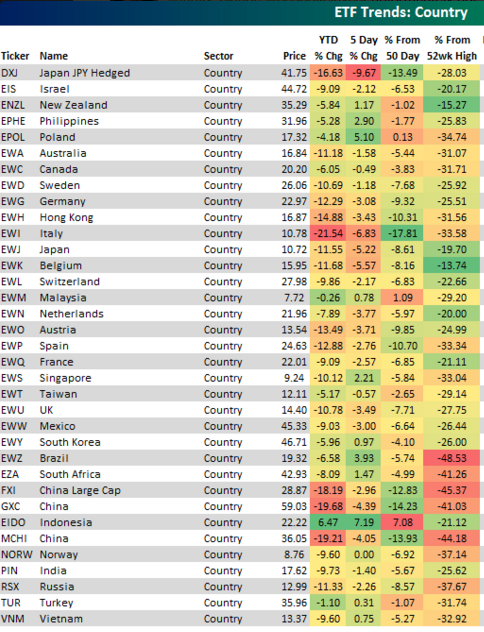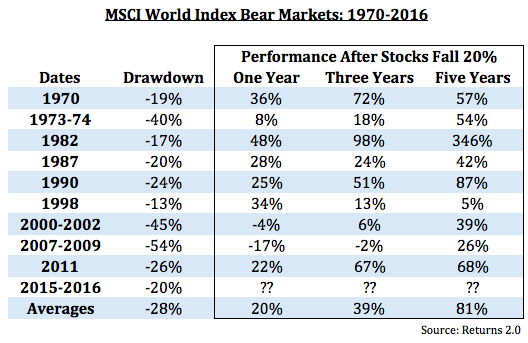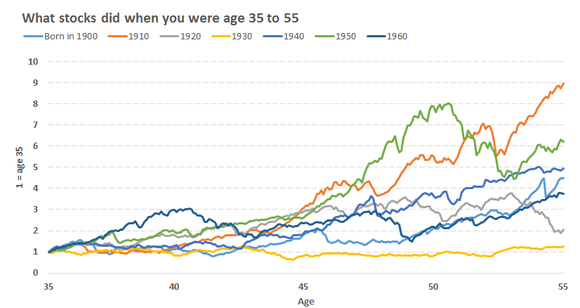In debates about whether growth is a percentage point up or down, we too often lose sight of the absolute scale of China’s economy. No matter what rate the country grows at in 2016, its share of the global economy, and of many specific sectors, will be larger than ever. My snapshot of China in 2016? An increasingly diverse, volatile, $11 trillion economy whose performance is becoming more and more difficult to describe as one dimensional.
The reality is that China’s economy is today made up of multiple subeconomies, each more than a trillion dollars in size. Some are booming, some declining. Some are globally competitive, others fit for the scrap heap. How you feel about China depends more than ever on the parts of the economy where you compete. In 2015, selling kit to movie theaters has been great business, selling kit to steel mills less so. In your China, are you dealing with a tiger or a tortoise? Your performance in 2016 will depend on knowing the answer to this question and shaping your plans accordingly.
Many well-established secular trends in China will continue in 2016. The service economy’s expansion is perhaps most prominent among them. In this piece, as usual, I won’t spend much time on the most familiar things. Instead, I will highlight what I believe will become the more important and more visible trends in 2016, either because they are now accelerating to scale or a discontinuity may become a tipping point. (For a quick summary, see sidebar, “The China Orr-acle: Gordon’s predictions for 2016.”) I hope you find my ideas valuable.
The 13th five-year plan—few surprises
Much of China’s 13th five-year plan will seem pretty familiar, as it has been flagged in advance at the Fifth Plenum and elsewhere. Perhaps the only challenge will be to interpret the plan’s intent clearly through the new “party speak” now coming to dominate government pronouncements.
The GDP growth target will still be 6 percent–plus, which will be softened a bit but not eliminated by parallel quality-of-life goals: the environment, health, income, and the like. Achieving the growth target will remain the core objective of fiscal and monetary policies, so expect lower interest rates and pressure on the exchange rate versus the US dollar in 2016. Financial reforms aimed at moving more of the economy toward a market-based allocation of capital will continue.
Meanwhile, there will be more progress on interest-rate deregulation, on the IPO process (registration rather than approval), on permitting new entrants (especially from the tech sector and from abroad) into financial services, and on reimplementing laws suspended in the summer of 2015. The plan will promote decentralization, but the reality is likely to be greater centralization. More infrastructure will be built, mainly to enhance intraregional development—for example, around Greater Beijing.
Green initiatives, reinforced by December 2015 commitments made in Paris and the “red alert” in Beijing that same month, will take center stage. The central government will make such big and visible commitments to its citizens that local authorities will have to mount a serious effort to deliver. There will be tougher emissions standards and more spending to support the development of nonfossil fuels. Green finance will be available. Both private-sector and state-owned companies will rebrand their ongoing initiatives as green. China will explicitly build new export engines from its emerging global leadership in green products; for example, expect to see lots of Chinese-made air-filtration products in Delhi and the rest of India in 2016. Beyond green initiatives, going global will remain a key theme, as detailed in the One Belt, One Road program.
Finally, the plan will recognize China’s success in raising labor productivity over the past decade and prioritize the acceleration of productivity growth, for both capital and labor, from 2016 to 2020. The plan will raise the implications of higher productivity for workers: the disappearance of many traditional well-paying jobs and the need for increased labor mobility and for the lifetime renewal and development of skills. But I am concerned that implementation will be left to local administrators and that the regions requiring the most help will have the lowest amounts of money to invest in reskilling the workforce and the least impressive actual skills to deliver.
Fewer jobs, flatter incomes—and, potentially, less confidence
The workplace in China is already changing dramatically in ways that will create many individual losers—for example, workers in industry sectors in secular decline (such as steel or textiles) or in industries where technology is rapidly displacing people even as output grows (like financial services or retailing). The government must help these workers reskill themselves to deliver on its commitment that all parts of society will benefit from economic growth and to keep people actively engaged in the economy. It will not be enough for officials to visit major local employers, as they did during the global financial crisis, and press them to retain all their current workers.
Official government figures, which probably skew to the positive on jobs, show that construction lost 15 million positions over the past year. Mining, a much smaller employer, has lost millions more. Workers from these sectors have few skills relevant for the modern service economy, yet many are in their peak working years. Reskilling must happen at scale. Not everyone can deliver e-commerce packages and, besides, the wages from that kind of work aren’t likely to bring people into the urban middle class.
Government must persuade the people that it is committed to giving them the skills they need to be relevant in the workforce at all stages of their careers. But for everyone from migrant workers to university graduates, the state educational system isn’t delivering. China must roll out education, training, and apprenticeship solutions quickly and at scale to become the moderately well-off society its leaders aspire to achieve. This will be both complex and expensive.
Pressure for higher productivity and on jobs overall will lead to lower growth in household income and, potentially, an erosion of consumer confidence in 2016. Consumer spending has been responsible for well over 50 percent of GDP so far this year. If the government doesn’t handle less-confident consumers quite carefully, the kind of behavior the stock market experienced last summer will roil the broader economy.
The maturing of investing: More options for Chinese investors and foreign investment managers
Chinese investors today remain dependent on bank deposits and property. Yet after the volatility of the property and stock markets in 2015, investors want to diversify into more stable vehicles. The number of wealth managers seeking to address this need has increased massively. Often, their main challenge is not finding clients but rather credible products to sell. The main challenge for investors is to find advisers they can trust; most simply push the products that give them the largest commission.
Companies are responding to these developments. Larger wealth managers are moving online to deal directly with investors. Online lending sites are becoming broader wealth managers and acquiring mutual-fund distribution licenses. With interest-rate cuts likely in the year ahead, this may be a good time to invest in plain-vanilla bond funds, which are easily sold online. If retail investors conclude that the renminbi’s devaluation is a one-way bet, expect a sudden rush to invest in companies that manage nonrenminbi funds. Whatever happens, sinking money into a second, third, or even fourth property will no longer be a major way of investing in China.
Opportunities for foreign fund managers and brokers are growing as a result of regulatory changes, with international companies recently receiving approval to open 100 percent–owned investment-management operations and a foreign-controlled brokerage operation. The historic distribution problem that has held back many funds is being solved as a result of both the emergence of better wealth managers and the rapid acceptance of online distribution, initially thanks to Alibaba’s and Tencent’s push into money-market funds.
If your company does go after this opportunity, don’t forget the volatile mind-set of Chinese investors: if a product makes a loss, they still expect to be bailed out. Taking personal responsibility for investment decisions isn’t well accepted. Foreign fund managers must be prepared to deal with anger online and in person when a product they sell doesn’t live up to expectations. While I hope that in 2016 the government will allow more investments to fail and will stop organizing bailouts, progress will be incremental.
Manufacturing in China is changing, not disappearing
The closely watched manufacturing purchasing manager’s index (PMI) remains below 50, which indicates deterioration, leading to talk that the country may be nearing the end of its time as a manufacturer for the world. Let’s be clear: manufacturing is not about to become irrelevant in China. However, the country is evolving toward extremes of performance: the truly awful and the genuinely competitive.
Many companies—indeed entire sectors—may be nearing a PMI permanently below 50, but this doesn’t mean that the emergence of internationally capable Chinese manufacturers will do anything other than accelerate. I wrote two years ago about the lack of marketing skills in many Chinese companies and their reluctance to hire functional expertise outside their existing networks. That has changed incredibly quickly. Chinese CEOs incessantly ask me for names of functional experts, especially in data, marketing, and specific international markets. It’s great to see the follow-through and the hiring.
In 2016, we will realize that in many parts of the economy, a smaller Chinese manufacturing sector is actually a stronger global competitor than ever before. One indicator will be more international acquisitions by Chinese manufacturers. A second will be more multinationals blaming their lower growth not just on a slowing Chinese economy but also, specifically, on local competitors that are moving upmarket to gain share inside and outside China.
Some manufacturing sectors in China do have massive overcapacity and many mediocre producers. But the country also has successful innovators in many industries, some highlighted in the recent MGI report The China effect on global innovation. By aggressively adopting what we might consider Western concepts—lean and modular design, scaled learning, agile manufacturing, and intelligent automation—many companies are combining low costs with aggressive innovation. Their skills are spreading widely across China’s manufacturers.
Multinationals in China are facing up to this double challenge of lower growth and better local competition. A few are quietly exiting; I have met excited private-equity investors negotiating to buy their assets. More are adjusting their aspirations from “invest for the future” to “make money today” and lowering their cost structures to match. Some will move aggressively on the front foot. In 2016, more multinationals will attempt to purchase Chinese competitors—if you can’t beat them, buy them.
Agricultural imports are rising and rising
In 2016, China’s growing food needs will drive agricultural imports to record highs in both volume and value. A wider range of countries than ever before will find agricultural-export opportunities there.
Russia is one example. Its reorientation toward China, following the imposition of Western sanctions, has taken time to play out in agriculture—border inspection points and the like had to be scaled up. (This reorientation happened much more quickly with oil; China reduced its dependence on the Organization of Petroleum Exporting Countries to around 50 percent, from more than 65 percent, largely by increasing imports from Russia.) Nonetheless, Chinese imports of grain and oilseed from Russia reached 500,000 tons in the first nine months of 2015, compared with just 100,000 for all of 2014. Even significant volumes of corn from Ukraine are pragmatically finding their way across Russia and into China.
The full impact of the free-trade agreement with Australia won’t be seen until 2016. I expect rapid growth, particularly in meat. The Australian government’s recent decision to turn down an investment on national-security grounds will only temporarily deter Chinese investors from putting more money into Australian agriculture. Several had previously made approved investments, and others are sounding out international partners to invest jointly in new Australian projects. And a more economically stable Argentina will compete with Australia to provide beef to China and with Ethiopia to provide alfalfa at scale to feed China’s dairy herds.
After a pause in 2015, US farmers should increase their exports to China not just in soybeans (historically more than 40 percent of US agricultural exports to the country by value) but also in cereals, intermediate goods, and, especially, branded processed foods. These might be sold directly to middle-class consumers through the growing online market for groceries. Food safety will remain a theme that benefits US and other international producers of branded foods.
More centralization
The Chinese media, especially during President Xi’s increasingly frequent trips abroad, made it clear that economic decision making has been centralized over the past two years. China will become still more centralized in 2016, rolling back decentralization where it had unintended outcomes. For example, after local governments received authority to approve new power plants, more than 150 new coal-fired ones were green-lit in the first nine months of 2015—more than three times the number approved in 2013, under the old centralized decision-making process. Unsurprisingly, coal-producing areas granted the largest number of approvals for plants that weren’t required under any realistic demand projection, even setting aside the question of whether any new plants at all should be coal fired. State-owned enterprises are behind most of these projects and would expect to be bailed out if they fail. Thus, for multiple reasons, such decisions will be recentralized.
A second example is pensions. Mainland pension funds are still controlled largely at the provincial level, but shortfalls are covered by the center. That gives local governments little incentive to improve their investment performance—90 percent of the assets are held in bank deposits. The coming centralization will try to remove perverse incentives and to professionalize the overall approach to investments. Already, Guangdong and Shandong have entrusted part of their assets to the National Council for Social Security Fund. More regions will follow in 2016.
The consolidation of state-owned enterprises to create fewer but larger companies, each possibly dominating its industry, is a third example. And increased ideological conformity, as demanded by the Communist Party’s new rules, is almost by definition centralizing; people look to the top for approval of not just what they do but also of what they say and how they say it.
A major test of centralization’s effectiveness will come if consumer confidence starts to decline in 2016. Will the central government be able to pull the right levers quickly enough to create a good outcome nationwide? No one set of levers is likely to be fit for purpose across the entire economy. There will be no greater test of economic competence.
Moving people at scale—the middle class, not peasants
Despite prodigious investment, many Chinese cities cannot build enough quality infrastructure to avoid massive day-to-day congestion. Even though the new five-year plan will commit the country to build more of it, that will not solve these problems; growth has simply outstripped potential solutions. For example, Beijing’s population officially grew by 60 percent, to 21 million, in just the past 14 years—and unofficially by significantly more.
Wealthier cities will seek to follow Beijing’s lead in transferring large numbers of jobs and people out of city centers. In Beijing’s case, this policy has not involved moving migrant workers but rather 400,000 to 2 million middle-class residents—depending on which version of the plan you look at—by shifting many government offices out of the city center. Attempts to create satellite cities have generally failed to date; people have moved but jobs haven’t, so the satellites have become dormitory communities for commuters who add to the daily traffic congestion. Beijing is privileged in having money, land, and millions of government workers it can direct to move, but other cities will study what happens there and emulate it if they can find enough land.
Movies in China: $$$
A Chinese movie will gross $500 million domestically in 2016. As a benchmark, the highest-grossing movie of all time on US domestic screens is Avatar, at $760 million. This year’s leading domestic productions in China were Monster Hunt (which has grossed $380 million as of September) and Lost in Hong Kong (more than $200 million). The leading international movie, Furious 7, grossed almost $400 million in China. The country’s box office has been set to grow by almost 50 percent in 2015, and new screen additions alone should deliver 20 percent–plus growth in 2016. More than half of the top-ten movies for 2015 (as of late November) are domestic productions, and 60 percent of the box office comes from Chinese movies. The country’s producers and directors have clearly tapped into what excites local moviegoers (and what censors permit).
A risk to this rosy scenario comes from online movies, which are growing even more quickly. Legend of Miyue, an 81-episode historical drama, was recently launched, simultaneously, on broadcast and online channels through Tencent Video and LeTV. It attracted 700 million hits online in just 24 hours. No wonder Alibaba has invested more than $4.8 billion in a leading video platform. Consumers seem to want both the cinema and the mobile-device experience. I believe this trend will continue, and we will see new milestones for the big screen in 2016.
China continues to go global, with the United Kingdom as a new focal point
China’s outbound investment will accelerate in 2016, with One Belt, One Road–related initiatives driving much of it. A second driver will be distressed-asset acquisitions in basic materials and related sectors: Chinese acquirers may plan not to extract the assets in the near term but simply to stockpile them as long-term insurance. Finally, a growing share of the acquisitions will come from private-sector companies that aspire to global leadership. These companies are increasingly sophisticated buyers, conducting quality due diligence, working with traditional advisers, and focusing on countries where they think that warm political relations will make it easier to do deals.
In 2015, for example, the political relationship between China and the United Kingdom reached new highs, capped by President Xi’s extended visit to Britain in October. Chinese investment in that country is spreading well beyond flagship properties—to sectors ranging from automotive to luxury yachts to oil to pizza—with the goal of acquiring technology, brands, talent, and market access. These moves build off investments in all long-established UK industrial companies with bases far from London.
Following the confirmation of a nuclear-power deal, there’s also a perception in China that almost no acquisition in the United Kingdom will be blocked for political reasons. On almost every trip there, I can now be certain to meet multiple Chinese private entrepreneurs looking for investments and partnerships. In 2016, I anticipate large financial-sector investments as London moves to become a leading renminbi offshore market and possibly also Chinese acquisitions of UK asset managers. There is growing investment in UK research as well. Expect announcements of partnerships between Chinese private-sector companies and leading UK universities, especially in medical, biotech, and advanced materials.
Other countries will seek to emulate this path to attracting Chinese investment at scale.
I won’t predict when China will win the World Cup. Realistically, it will qualify for the next couple of tournaments only if FIFA goes ahead with its idea of increasing the number of participating teams to 40. But as the example of England proves, not winning international competitions is no barrier to having a highly successful, incredibly valuable domestic soccer league. In 2016, China can really start to move in that direction.
As always, don’t overfocus on short-term noise about Chinese GDP growth. Try to identify the medium-term direction of the parts of the economy relevant to your business. Enjoy China in 2016!
Courtesy of McKinsey














